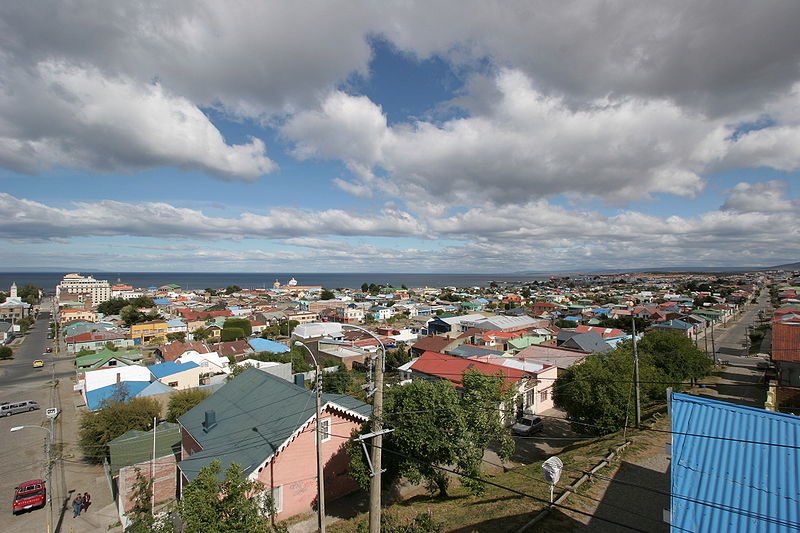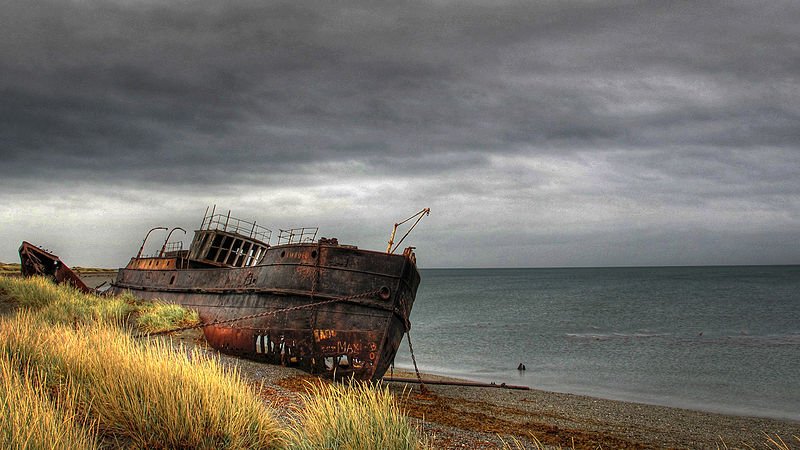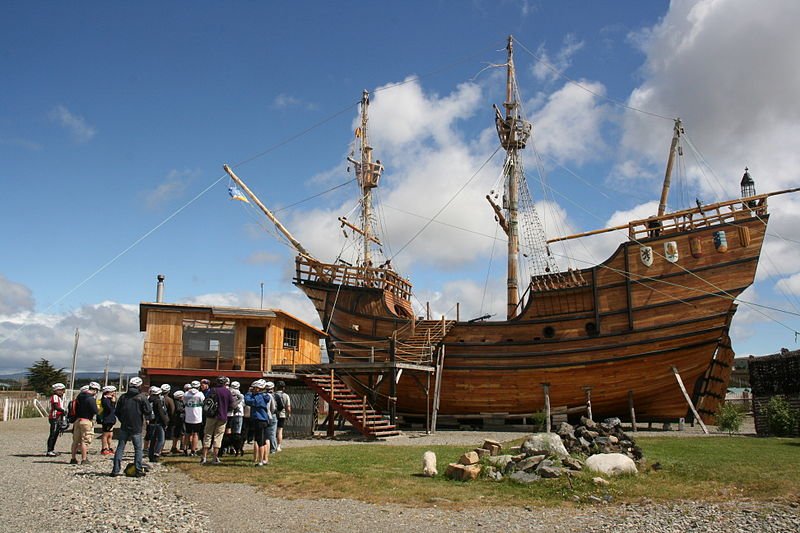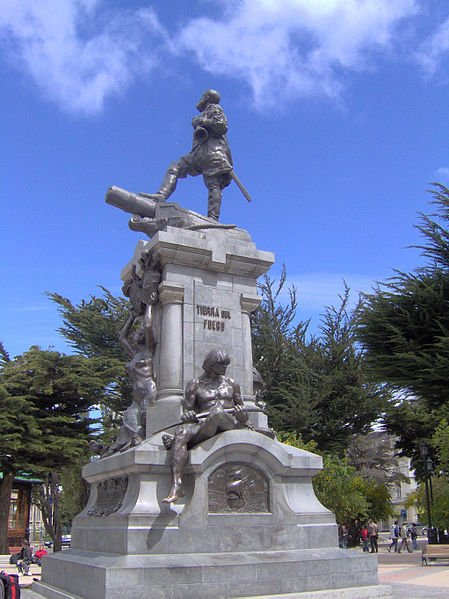 Punta Arenas, Chile
Punta Arenas, ChileSource: https://commons.wikimedia.org/wiki/File:Punta_arenas.jpg
Author: Insilentio

Punta Arenas is the capital of Magallanes & Antartica Chilena, the southernmost region of Chile. It covers 17,846.3 sq km (6,890.5 sq mi) and has a population of 120,000 (2011 estimate). Punta Arenas is the biggest city south of the 46th parallel south.
Punta Arenas is located on the Brunswick Peninsula (Península de Brunswick). It stretches south to Cape Froward, the southernmost point on the mainland of South America. The city experiences a semi-arid, ocean-moderated climate. The warmest month is January, with the average high temperature of 14.7°C (58.5°F). Coldest month is July, when the average low drops to -12°C (11°F). Punta Arenas is dry. The annual rainfall is just 376 mm (14.8 in). May tends to be the wettest month, recording 41.6 mm (1.638 in) of precipitation.
 Shipwreck, Punta Arenas
Shipwreck, Punta ArenasSource: https://commons.wikimedia.org/wiki/File:Amadeo,_Primer_vapor_de_Chile._San_Gregorio,_Patagonia,_Chile.jpg
Author: Daniel Diaz Nauto

The name Punta Arenas means "sandy point". Initial European settlement in the area goes back to 1584, when the Spanish established two settlements, Nombre de Jesús, followed by Rey don Felipe. Both failed due to the harsh climate, and were coyly called Puerto Hambre ("port of hunger"). These settlements were established so as to prevent raids by English pirates, so it was ironic that the last surviving member of the settlement was rescued in 1587 by Thomas Cavendish, an English pirate.
The hostile terrain was left as they were the subsequent centuries until 1843, when the Chilean government renewed its effort to establish a settlement way down under. The expedition was led by British sailor John Williams, and on 21 September, 1843, a new settlement was established. In 1848 it was relocated to a more superior located, by the Las Minas rivers. And this was the site that became Punta Arenas.
 Nao Victoria Museum, Punta Arenas
Nao Victoria Museum, Punta ArenasSource: https://commons.wikimedia.org/wiki/File:Nao_Victoria_2011_12_01.JPG
Author: Juanmatassi

For much of the 19th century, Puntas Arenas served as a military installation and a penal colony. The colony took on a more civilian character towards the end of the 19th century, with the arrival of settlers to start sheep ranches. Discovery of gold also brought an influx of prospectors.
The economy of Punta Arenas today depends on its port activity, the oil industry, fishing and sheep breeding. Being the southernmost city in South America, it is the port of all for ocean liners and round-the-world cruises.
Visiting Punta Arenas
Many casual tourists reach Punta Arenas as a stop on round-the-world and transatlantic cruises. As an independent traveler, you can reach the city by flight from Puerto Montt and Santiago. Magellan Memorial, Plaza Muñoz Gamero, Punta Arenas
Magellan Memorial, Plaza Muñoz Gamero, Punta ArenasSource: https://commons.wikimedia.org/wiki/File:PArenas_Magallanes.JPG
Author: Buron444

Places of Interest in Punta Arenas
- Cementerio Municipal Sara Braun
Mausoleum and final resting place of those who died in Punta Arenas. On the northwest is the statue of an Indian representing the deceased indigenous groups. - Instituto de Patagonia
Cultural institute featuring artifacts and antiques from the early days of Punta Arenas. - Isla Magdalena
Island located two hours from Punta Arenas. It has some 60,000 breeding pairs of Magellanic penguins. - Museo Regional Braun Men&eaclute;ndez
Museo exhibiting the memorabilia of the wealthy Braun-Menéndez family, which owns the huge raches in Punta Arenas in the early 20th century. - Museo Regional Salesiano Maggiorino Borgatello
Museum documenting the history, ecology and anthropology of the Magellanes region. - Palacio Sara Braun
Mansion of the Braun-Menéndez family at Plaza Muñoz Gamero. - Plaza Muñoz Gamero
Main square of Punta Arenas named after Benjamín Muñoz Gamero, the provincial governor who died in the 1851 mutiny. It has a monument commemorating the 400th anniversary of Magellan's voyage. The tradition is to rub or kiss the toe of the Indian chief, for good luck, and to ensure one comes back to Punta Arenas. - Puerto Hambre
Site of the original settlement established in 1584, today a cluster of ruins preserved as a national monument. - Seno Otway
A penguin rockery that is visited as a half-day tour from Punta Arenas. 2,500 pairs of Magellanic penguins come here to nest between November and March.
 Latest updates on Penang Travel Tips
Latest updates on Penang Travel Tips

Copyright © 2003-2025 Timothy Tye. All Rights Reserved.

 Go Back
Go Back